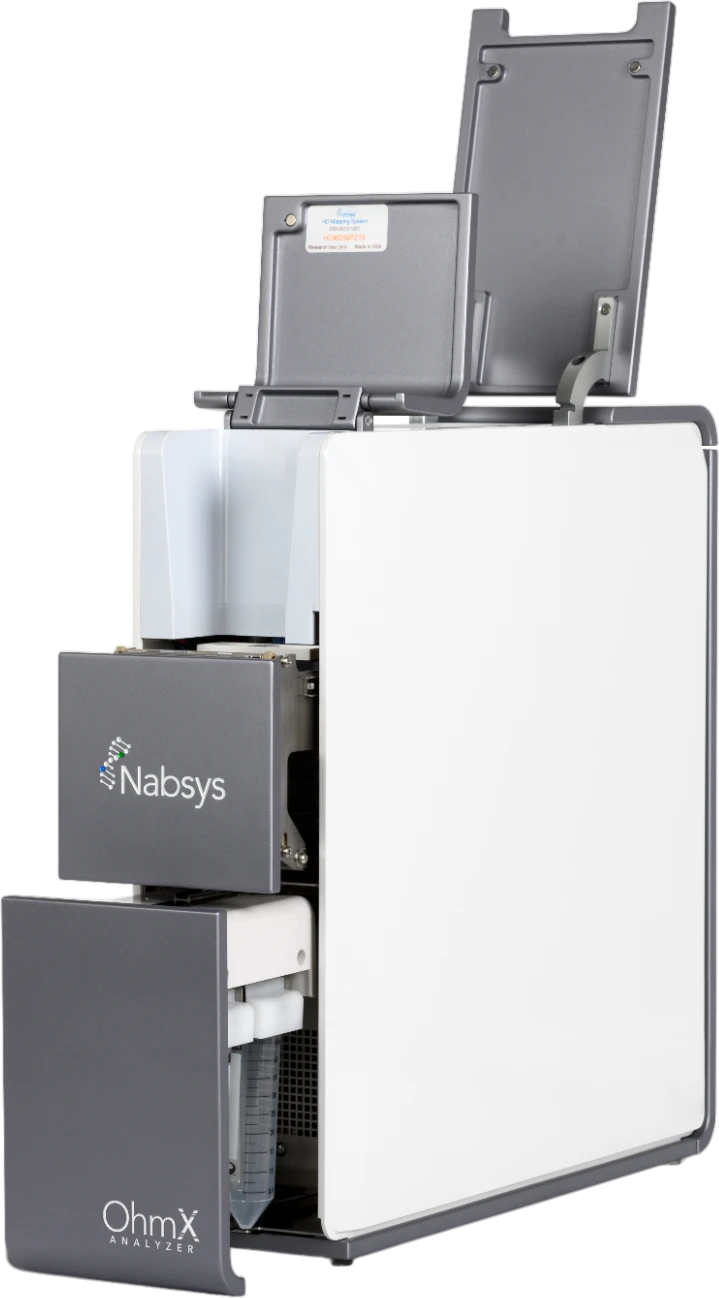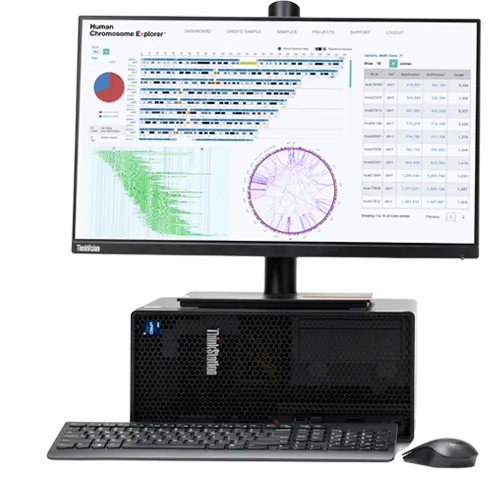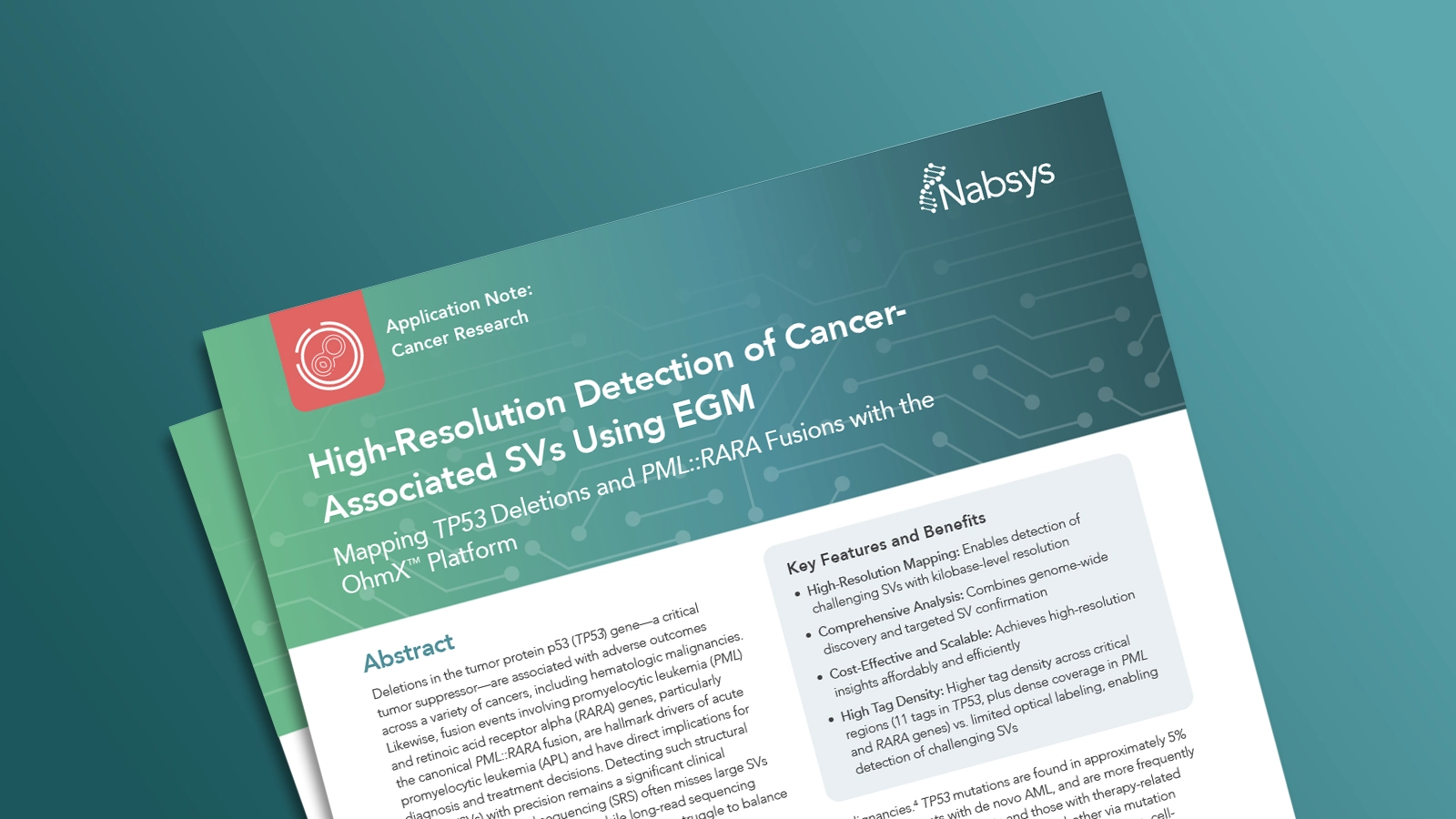OhmX Platform

Resolve a Broader Range of Variants in One Compact Platform.
Using state-of-the-art, electronic nanodetectors, the OhmX gives you the ability to detect tagged high molecular weight DNA molecules with unprecedented precision and speed. Discover how you can empower your lab, from structural variant verification to whole genome structural variant analysis.

Flexible Run Times
Cartridges contain preformatted, ready-to-use reagents for cleaning, washing, and running experiments on the solid-state nanodetectors with volumes automatically managed by software.
Easy Sample Injection
Sample loading port allows for easy injections and walkaway sample introduction into the detector to support longer experimental runs.
High Accuracy and Sensitivity
Precisely tuned electronics eliminate sources of noise and increase detection throughput of tagged HMW DNA molecules.
Fluidics Automation
Detector carriage precisely aligns the detector with the microfluidic paths, allowing for completely automated experimental runs and data acquisition.
Simple Waste Collection
Waste is automatically collected and software alerts instruct when to remove.
Small Benchtop Footprint
Entire Platform sits within a 30”x 17” x 17" space
OhmX VOLT™ Whole Genome Kit
Our OhmX VOLT™ Whole Genome Kit is a seamless path from DNA to valuable insights on the OhmX Platform. The amplification-free, user-friendly workflow provides unbiased, whole genome-wide SV detection and takes you from cells to injection in just one day using standard molecular biology techniques—without the need for additional equipment.
.webp)

OhmX Detector
Our nanochannel technology helps you reduce design complexity, consumable needs, and experiment costs. The OhmX Detector, a single-use consumable, fits into the instrument's detector drawer, forming a tight seal with the fluidics system to enable sample injection and controlled reagent flow through the nanochannels. It has 256 monitored channels, sending data continuously to the on-board processor every 30 minutes to the on-board processor, ensuring cleaning, flushing, or injecting is done as needed. Waste is collected efficiently.
OhmX Cartridges
OhmX Cartridges provide a plug-and-play solution containing all the reagents needed for running your samples on the OhmX Analyzer. These pre-dilute, ready-to-use, self contained cartridges enable a fast and efficient OhmX run set up.

Software & Analytics
The OhmX platform powers your research through an advanced informatics pipeline that supports both human whole genome variant discovery and variant verification analysis.

De Novo Assembly
Our constantly improving algorithms use more of the available data to build accurate consensus maps and make insightful SV calls.
Simple
Our intuitive web-based user interface allows you to upload, run, and analyze results without bioinformatics expertise or support.
Secure
Built in the Google cloud, HCE benefits from the very latest and best encryption and cloud security.
Affordable
HCE lives in the cloud so there is no need for expensive hardware or related human resources.
Fast
There is no limit to the dynamic compute resources that can be allocated to a project bringing analysis times down to a few hours and enabling you to process many samples simultaneously.
When DNA enters the nanochannel, it blocks the current that can go through the channel and is measured as a voltage change. When a tag is also present on the DNA, the current is further reduced resulting in a sharp signal. The voltage is measured as a function of time so the time that a channel is empty, the time it is occupied by untagged DNA, and the time each tag goes through the channel can be determined. These times are converted to distances for each molecule.
Both EGM and OGM place tags on isolated high molecular weight DNA according to known locations in the genome and then use the distances between tags to align sequence reads to each other or to the genome. EGM and OGM differ in how those tags are applied to the DNA and how they are detected.
EGM: uses voltage differences induced by current blockade to locate the tags with high resolution.
OGM: uses fluorescently-labeled tags that are excited by lasers and then detected with high resolution imaging systems. The use of light introduces both expense (camera and lasers) and resolution limitations due to the diffraction limits of light and the impact that has on resolving labels that are close together.
Optical imaging is reliant on the wavelengths of light to detect tags on DNA molecules. Thewavelength of light limits the separation at which different tags can be distinguished andincreases the noise in the tag positioning. This limits the resolution of any optically-basedsystem. EGM relies on measuring voltage change as DNA moves through a nanochannel whichcan be done quickly and with higher resolution.
At present, about 150x raw coverage is required to enable de novo assembly. We are expecting coverage requirements to decrease as we optimize workflows.
Maximum throughput is 5 samples per week, 260 genomes per year for full utilization for one instrument.
It is expected that any cells compatible with the NEB Monarch® hmwDNA Extraction Kit for Cells & Blood (catalog #T3050S) should work.



